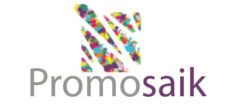Mark Robinson – August 1, 2019
Genesis 11:9 tells us that “the Lord did there [the Tower of Babel] confound the language of all the earth”. Whether Yahweh anticipated the commercial opportunities this move would afford is difficult to say, but according to MRFR Analysis, the global translation service market is expected to grow at an annualised rate of 11 per cent through the period 2017-23.
Globalisation, increasingly liberal trade policies and digitisation are combining to drive demand in this specialist area. Translation services are applied across the board: patent adoption, language education, software localisation, legal equivalency and computer assisted translations – to name but a few. As businesses expand globally, often as not the major challenge is the difference in communications.
The US, possibly due to accelerated adoption of translation services in its security and government agencies, is prominent in the field, with the likes of privately-owned Lionbridge Technologies and TransPerfect Translations to the fore. But there are some interesting options a little closer to home for UK investors, particularly if they favour a qualitative approach to investing. That’s not to decry the potential growth rates on offer, but there are other reasons why you might consider adding stocks within the sub-sector to your long-term portfolio.
When you review both RWS Holdings (RWS) and SDL (SDL) it’s apparent that you might struggle to replicate either of the groups’ business models if you were so inclined. The barriers to entry in the translation market are somewhat different from, say, the power generation industry. The capital allocations required to operate as a large utility are reflected in its fixed asset base. Consider that property, plant and equipment accounts for 70 per cent of National Grid’s (NG.) £63bn total asset base. That represents a sizeable barrier to entry, but with translation service specialists – or other operators within the ‘knowledge economy’ – it’s the difficulty in matching their human and intellectual capital that wards off would-be rivals.
Consider RWS, a Buckinghamshire-based technical language service, which provides patent translations, international patent filing services, life sciences translations and linguistic validation, along with other specialist needs across a range of markets.
Its widespread involvement in intellectual property matters is somewhat ironic given that its own level of goodwill and intangible assetscomes in at £406m, or 75 per cent of its asset base. That figure expanded materially at the end of 2017 when it forked out $320m to bring Czech Republic-based LSP Moravia within the fold; at a relatively modest 11.8 times 2016 cash profits.
Moravia works with many of the world’s largest publicly traded technology companies and competes head on with Lionbridge and SDL. The acquisition significantly expanded the scale and scope of group operations, as Moravia’s core business is in enterprise information technology, providing localisation services covering software, websites, marketing materials and audio/video for myriad languages and locales.
When you’re engaged in translation services for patent filing, and linguistic validation for the software, medical and pharmaceutical sectors it’s not enough to simply fill a room with linguists and polyglots; a certain level of technological expertise is also required. Imagine how difficult it would be to identify, secure and train staff in the various disciplines that RWS covers. This is part of the reason why the stock has proved so appealing to investors; the ability to resist competitive threats through technical barriers – and for the moment that includes artificial intelligence.
And the highly specialised commercial function of a translation service, not unlike, say, that of an auditor, means that it can often become embedded as part of a client’s day-to-day operations. Once that happens, it might be too costly or complicated for customers to look elsewhere.
IC View
We have both SDL and RWS on buy recommendations; the latter since January 2018. SDL now trades at a considerably wider discount to its historical price/earnings ratio relative to industry peers, so it looks a better bet from that perspective. By contrast, RWS is trading at a sizeable premium across a range of profitability metrics, perhaps implying that the market expects further earnings upgrades going forward. And why not? The performance of the group over the past five years has trumped the MRFR estimates, with revenue and cash profits growing at annualised rates of 34.45 per cent and 32.7 per cent, respectively. The group’s gross margin has moved within a relatively narrow band of 38.8 per cent to 43.8 per cent over the same period, while return on capital employed sits at an average of 16.3 per cent. The business has grown and returns moderated through last year, but you don’t need a translator to make sense of those numbers.

